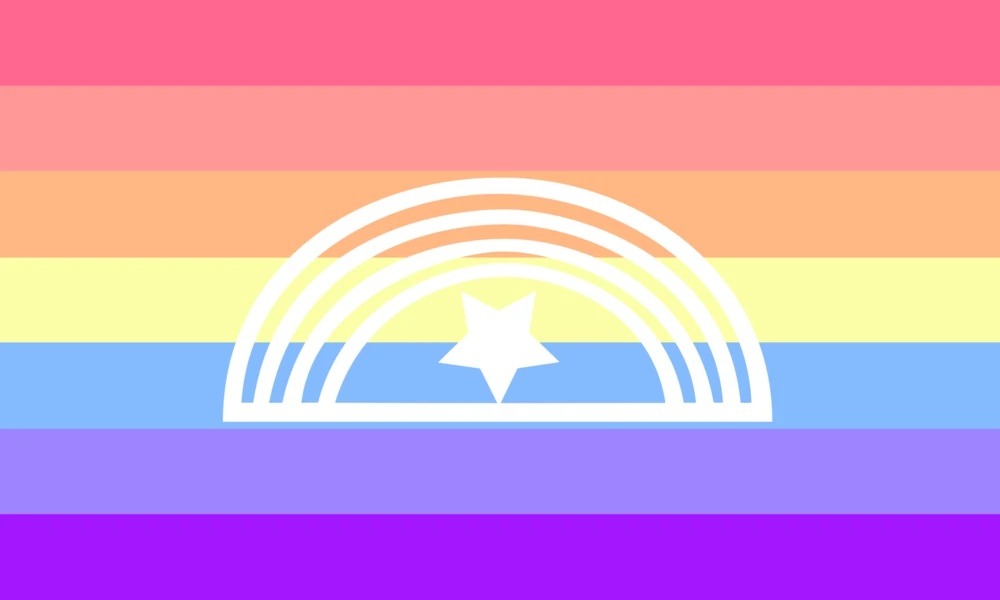Written by Maverick Lumen
Xenogenders. Maybe you’ve heard the word but aren’t familiar with what it means. Perhaps you met someone who described themselves as pup- or catgender and didn’t think it was appropriate to grill them mercilessly when you just met. Or you’ve never heard the word and were drawn to read this anyway to fill a gap in your knowledge. It’s even possible that you are a trans or non-binary person who has previously been dismissive of people who use different xenogender-aligned terms and today you decided you might want to change that. Whatever the reason, thank you! I hope that through this essay you open your mind to xenogenders.
In the vein of transparency and connection, I will self-locate. I’m Maverick, I use they/them, xe/xem or 佢 (check out the pronunciation here) pronouns. I am autistic, hard of hearing, and mixed-race (Chinese and White). I am a settler of colour on the unceded lands of the Tsleil-Waututh, Squamish, Stó:lō, Stz’uminus, and Musqueam peoples. Indigenous people of this land believe that, under Indigenous leadership, the land will heal, flourish and thrive once more. Most of the time I describe myself as non-binary or genderqueer. However, I also use chaosgender (gender is erratic and ever-shifting), celestarian or celestialgender (having celestial qualities of expansiveness that is beyond comprehension), genderdead (gender can have a dead quality) and others depending on how I am relating to my experience of gender at any given time. Using myself as an example, I’ll walk you through understanding the exciting vastness that are xenogender identities.
[Xenogenders] are often an amalgamation of x term + gender (or the reverse) to illustrate and express an aspect of a person’s experience of their gender identity or expression.
Xeno (of strange or alien origins) + gender was coined by Baaphomett on Tumblr in 2014 and was used to describe genders that are difficult to describe via human understandings and means. They are often an amalgamation of x term + gender (or the reverse) to illustrate and express an aspect of a person’s experience of their gender identity or expression. These can be aesthetics, concepts, animals, plants, fantastical beings, archetypal, and more! The xenogenders I align with tend to be of a conceptual (chaosgender and genderdead), aesthetical (celestarian / celestialgender) or fantasy creature nature.
Since childhood, I have had a fascination with the undead and the monstrous. As I moved into my teenage years, this expressed itself through kintypes: liches (necromancers who have achieved great power and eternal life in undeath), Greg from Over the Garden Wall, frogs, bats, crows, and more. These kintypes and fascinations have since evolved into just being parts of who I am. I still have a strong relation to a lich as a creature (you only need to look as far as my usernames to know) and I watch OtGW every autumn. I try to make friends with the crows I come across and smile when I see pictures of frogs and bats.
When you acknowledge that gender is a social construct… you might start to wonder what exists in the beyond.
I align with them as parts of my being because of the beliefs I hold around gender. When you acknowledge that gender is a social construct, something that was given meaning by us humans and thus is shaped by our relationships with ourselves and those around us, you might start to wonder what exists in the beyond. What’s possible when gender is no longer looked at as just percentages or sliding bars of masculinity, femininity and neutrality. I think gender as it exists now on a societal level is something to be abolished. We all know how impossible standards of gender and bodies affect our day-to-day lives. The pressures it puts on us to conform, to assimilate, into the acceptable pre-packaged genders that will be easily understood by another person.
For trans folks, there is a different sort of pressure. One that tells us if we manage to perform gender this or that way then we will finally be safe. That we will be accepted. But that acceptance isn’t real, it’s more akin to tolerance.
For cis folks, it is so simple and easy to never interrogate or take a critical look at one’s relationship to gender. To just stick with the gender the doctor who delivered them, marked their birth certificates with, and say “Yes, this is who I am. There isn’t a need for me to look deeper”.
I really want to invite you to take a deep look at your experience of gender.
Whether you’re trans or cis, you’ve got to ask yourself what gender means to you. I really want to invite you to take a deep look at your experience of gender. The way you like to perform it. The ways you don’t like to. The words you use to describe it. The ways it shifts, or is rigid, or any other aspect. Then ask yourself, what makes it a qualifier or descriptor of your gender and not a part of it? Obviously, not everyone is going to align with xenogenders like me. For some people, words under the non-binary umbrella or using trans/cis woman or trans/cis man might be enough. It’s good to know that about yourself. Gender is a personal experience that others interact with. That means, for some, this might be a journey that they don’t get public about. That’s fine too! Meanwhile, I’ll be here collecting and trading genders like I’m 9 and just learned about Yu-Gi-Oh. RIP little Maverick’s deck, you’ll be sorely missed.
Maverick (they/xe/佢) is an artist, tarot reader, and queer peer who alchemizes intuitive offerings with a trauma-informed, anti-oppressive, and lived-experience grounded lens. Serving trans and non-binary people, they seek to offer space where spiritual queers can begin to uncover what’s possible when they revive the parts of themselves that died while trying to survive a society that marginalizes them. Where revival and healing can be the path to resistance itself. If you’d like to support their work check out their Ko-Fi (https://ko-fi.com/queerlich).

